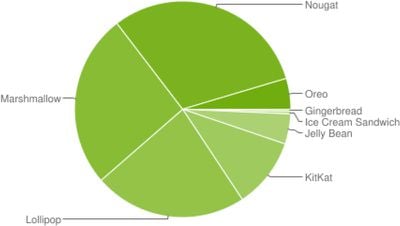The iOS 11 operating system is installed on 76 percent of devices as of April 22, according to statistics Apple shared today on its App Store support page for developers.
That's up 11 percentage points since January 18, when iOS 11 was installed on 65 percent of devices, and 24 percentage points since November 6, when iOS 11 was installed on 52 percent of devices.

19 percent of devices continue to use iOS 10, while 5 percent of devices use earlier versions of iOS, such as iOS 9. Many of these devices are likely older and unable to be updated to the newest version of iOS.
iOS 11 adoption rates have been growing steadily, but adoption has been markedly slower than iOS 10. In February of 2017, for example, iOS 10 was installed on nearly 80 percent of active devices.
iOS 11 has been plagued by high-profile bugs and issues like the HomeKit bug, the Spectre and Meltdown vulnerabilities, and most notably, the iPhone slowdown controversy that saw Apple throttling the performance of older iPhones. Though not directly related to iOS 11, it's likely people shied away from updating after reading about the issue.
The 11 percent uptick in iOS 11 adoption from January to April can be attributed to the launch of iOS 11.2 in December and iOS 11.3 in March, both of which were major updates introducing key new features.
iOS 11.2 brought Apple Pay Cash and faster 7.5W wireless charging for Apple's newest devices, while iOS 11.3 included a new battery health tool, ARKit 1.5, a Health Records feature, and many other smaller changes.
iOS 11.4, which is in the works, is another update that could spur adoption, as it will introduce Messages on iCloud and AirPlay 2 if the features currently in testing make it into the release.
Customers may be wary of iOS 11, leading to somewhat slower adoption rates, but Apple's iOS 11 install base is beyond impressive compared to Google's adoption numbers for its latest operating system update.

As of April 16, just 0.5 percent of Android devices are running the newest version of Android Oreo, and only 4.6 percent of devices total have Oreo installed. The majority of Android users continue to run Android Lollipop, Marshmallow, and Nougat, operating systems that came out in 2014, 2015, and 2016, respectively.























